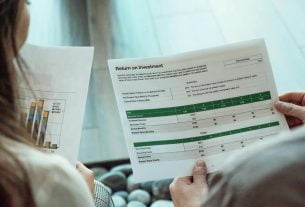Accidents can be traumatic and depressing experiences, but dealing with the aftermath is very important. With about 233 million licensed drivers in the US as of 2021, which is projected to have gone up by a few million in 2024, there are over 6 million road crashes yearly across the country. But amidst this, a lot of drivers do not know their next line of action in securing their financial interest by navigating the claims process after suffering a collision.
Navigating the Claims Process: What to Do After an Accident
In the wake of such an occurrence, it is critical to understand the procedures you must take to defend yourself, your rights, and your safety. And this starts by remaining calm and collected after the event. Whether you’re in a tiny fender bender or a more catastrophic disaster, this article will guide you throug the insurance claims process and safeguard your rights.
Understanding the Insurance Claim Process
An insurance claim is the process of alerting your insurance company of an accident or occurrence in which you were involved. This critical step begins the process of obtaining your insurance coverage, which will allow you to pay for any damage or injuries you may have sustained if it is specified in your policy. However, reporting a claim may be stressful and confusing. That is why it is critical to have a solid grasp of how to successfully navigate the procedure.
Whether you’re involved in an auto crash, a home accident, or a building collapse, it is important to report the occurrence to your insurance provider as quickly as possible. In cases of automobile accidents ensure to notify the insurance company, even if you’re not at fault. Regardless of where the accident occurred, you will most likely be asked to submit information on the circum
stances and severity of your injuries. Such information may include photos of the accident scene, the names of any witnesses, and a more detailed account of the incident.Nevertheless, you must have a thorough understanding of the reporting procedure when dealing with an insurance claim. This understanding will help your claim resolve more smoothly and successfully.
Steps to Complete the Claims Process After an Accident
1.Ensure the Safety of All Involved and Seek Medical Attention
Your safety and that of others involved in the accident is very crucial. Examine yourself and any other persons involved for injuries as the first step. This will assist in assessing the seriousness of the situation and if you require medical attention. To avoid more collisions, try to park your automobile in a safe spot away from oncoming traffic and turn on your hazard lights to alert other cars. Never forget that some injuries, like those to the neck or back, may not exhibit symptoms right away, even if you and everyone else involved seem fine at first. Consequently, it’s critical to seek medical assistance in order to guarantee everyone’s well-being.
2.Contact the Local Police
After ensuring everyone’s safety following a car accident, the next crucial step is to contact the police, regardless of the severity of the collision. A police report serves as vital documentation for your insurance claim, acting as proof of the accident and aiding in determining fault. Cooperate fully with the police, providing accurate information without admitting blame. If the police don’t arrive at the scene, request a report from the local law enforcement office. This report can play a significant role if you need to file an insurance claim or seek legal recourse later on.
3.Gather Information and Document the Scene
The next step is to gather as much evidence as possible to support your case. Exchange contact and insurance information with the parties involved, including names, phone numbers, addresses, and policy details. Take photos and videos of the scene, capturing vehicle damage, road conditions, traffic signals, and the direction each vehicle was traveling. Additionally, note down the date, time, and weather conditions. If possible, collect contact information from any witnesses who saw the accident. This comprehensive documentation will be invaluable when dealing with insurance companies, filing a police report, or pursuing legal action.
4.Contact the Insurance Company
The purpose of insurance coverage is to secure your finances in the event of an accident. Therefore, you should call your insurance company as soon as possible after being involved in an accident. For this reason, the majority of insurance providers offer a 24-hour claims helpline. Tell the truth and give precise details on what happened. By doing this, you will avoid being held responsible for any accident-related damages. The significance of being truthful and providing accurate information cannot be overstated, as the most frequent reason auto insurance claims are rejected is a factual misrepresentation, no matter how slight.
When preparing your report, you must include the following information:
- Name and license number of the motorist involved in the accident
- Time, date, and place of the mishap
- The number of your policy
- The vehicle’s make, model, year, registration number, and number plate number
- The severity of the injuries
- The extent of the car’s damage
- The number of passengers that are engaged
- The investigating police officer’s name and badge number
- All involved drivers’ names and license numbers
- Your account of the mishap
- Names of insurance providers and each driver’s policy details for their motor insurance
The significance of being meticulous when gathering information after an automobile accident is shown in this list of information required to file insurance claims.
5.Document Your Expenses
Keep track of all the personal expenses associated with the accident, including medical bills, auto repairs, rental car fees, and any other associated charges. In order to determine the complete amount of your damages and pursue just compensation, you must have this documentation. Keeping invoices from physical treatment appointments or prescription drug receipts, for instance, can help prove the monetary implications of the accident.
6.Understand Your Coverage
Understanding your insurance coverage is crucial after a car accident. Familiarize yourself with your policy details, including coverage types (liability, collision, comprehensive), deductibles, and limitations. This knowledge will help you anticipate how your claim will be processed and the compensation you might receive. Don’t hesitate to clarify any questions with your insurance agent. Once you file a claim, a designated adjuster will be assigned to investigate the accident and assess the damage. Cooperate fully with them by providing requested information promptly and honestly. Remember, transparency is key – misrepresenting information could jeopardize your claim.
7.Beware of Insurance Adjusters
Be cautious when communicating with the insurance adjuster. Their primary goal is to minimize payouts, and they may use your words to deny or undervalue your claim. To protect yourself, consider having a car accident lawyer handle communications with the insurance company. A lawyer can ensure you don’t fall victim to tactics like downplaying injuries or pressuring you into a low settlement offer. Remember, insurance companies scrutinize information to minimize payouts, so be mindful of what you say.
8.Consult an Attorney
It is highly recommended to seek legal assistance, especially if you’ve sustained injuries or significant property damage. Legal professionals can be invaluable assets in navigating the complexities of the situation and negotiating with the claim adjuster. An experienced attorney will not only protect your rights but also fight to ensure you receive fair compensation for your losses. And if push comes to shove, they can even represent you in court if the insurance company denies your claim or offers an inadequate settlement.
Final Thoughts on Navigating the Claims Process: What to Do After an Accident
Although being in a car accident can be distressing, some of the tension and anxiety can be reduced by understanding how to handle the claims process. Prioritizing safety, gathering information and evidence, getting help quickly, and working with your insurance provider will help speed up the claims procedure and guarantee a more satisfactory outcome. To safeguard your interests, don’t forget to study your insurance policy, understand your legal rights, and, if needed, seek legal counsel. You can handle the aftermath of an accident with confidence and peace of mind if you prepare ahead of time and work diligently.





